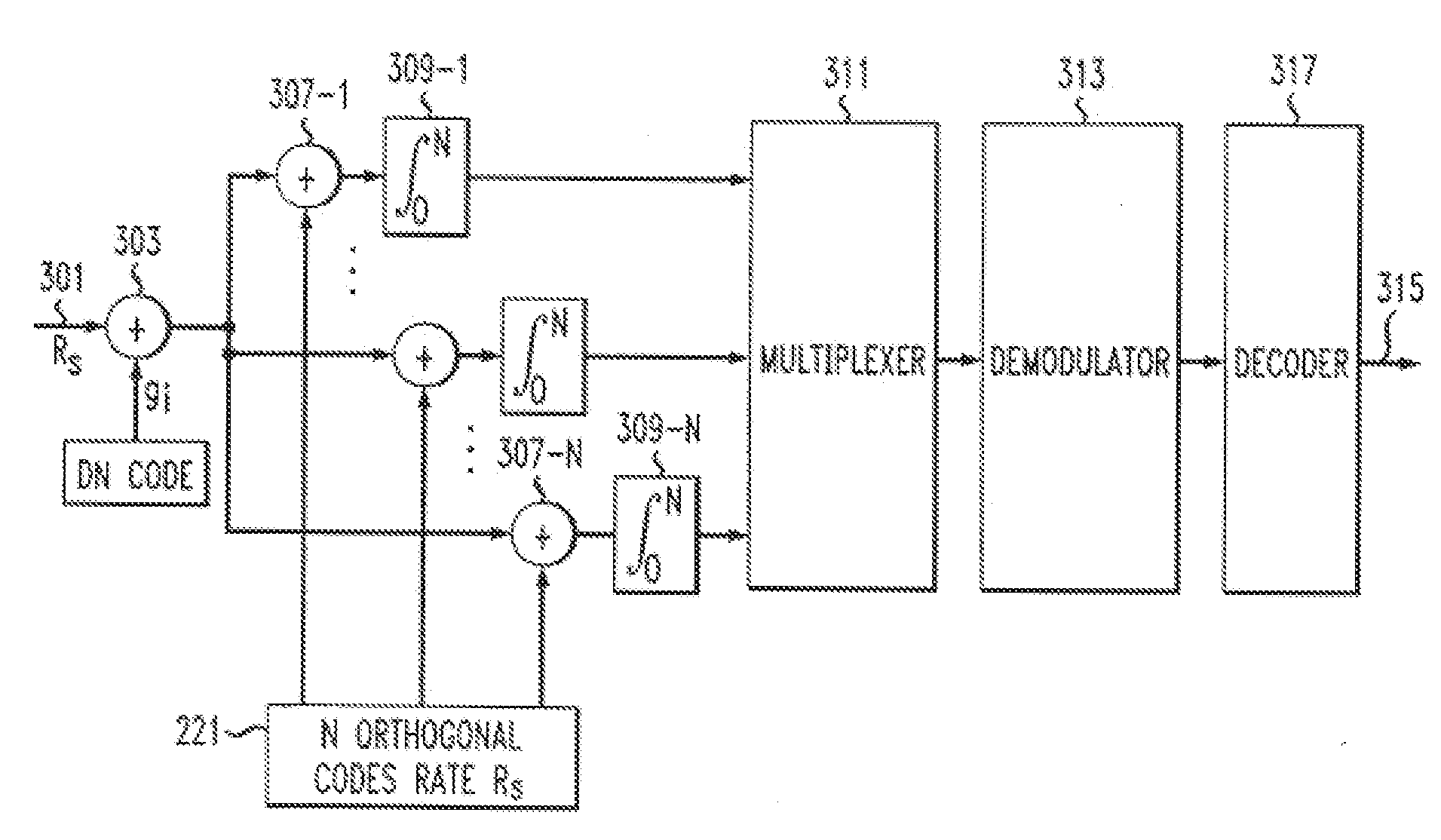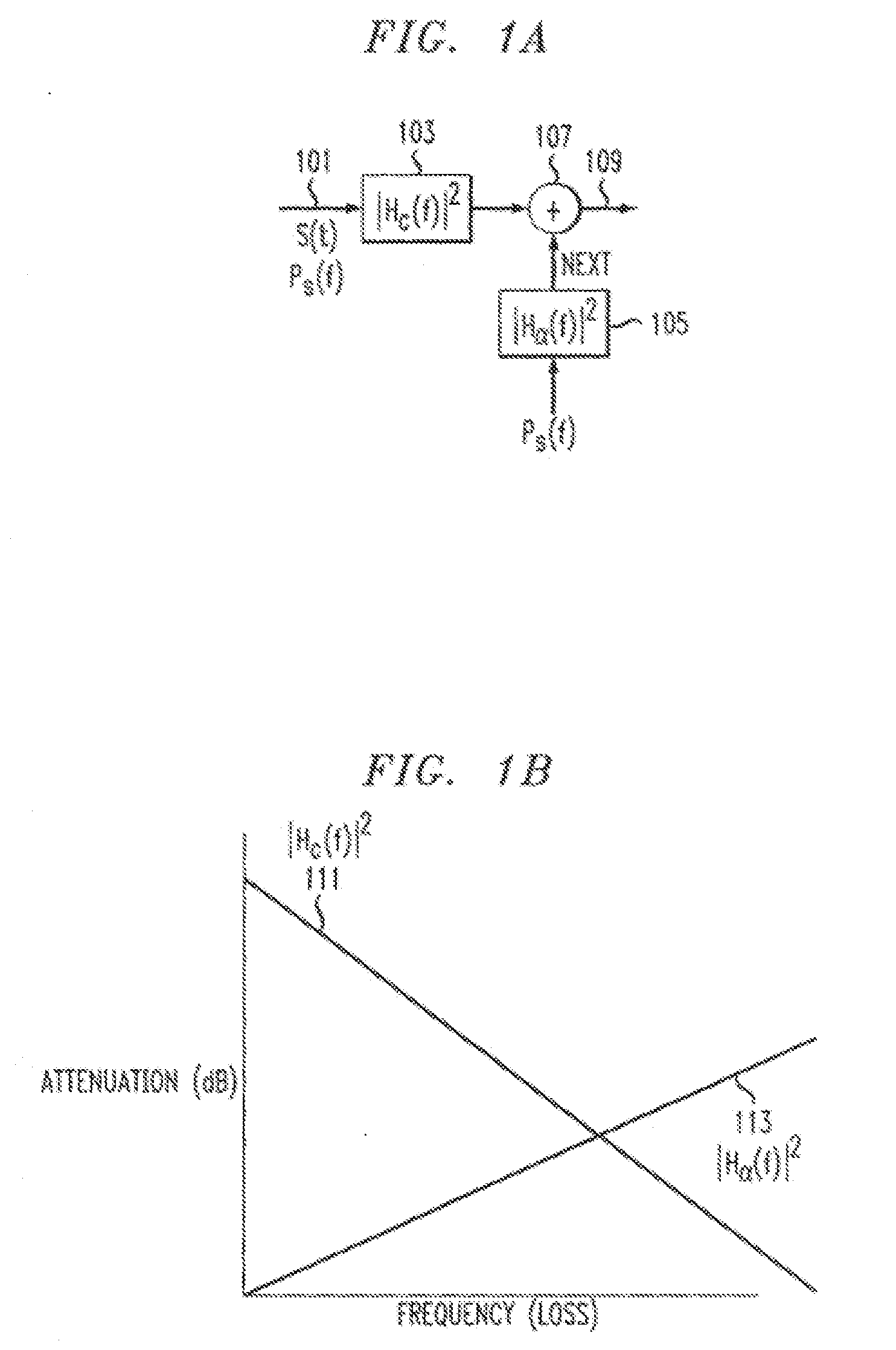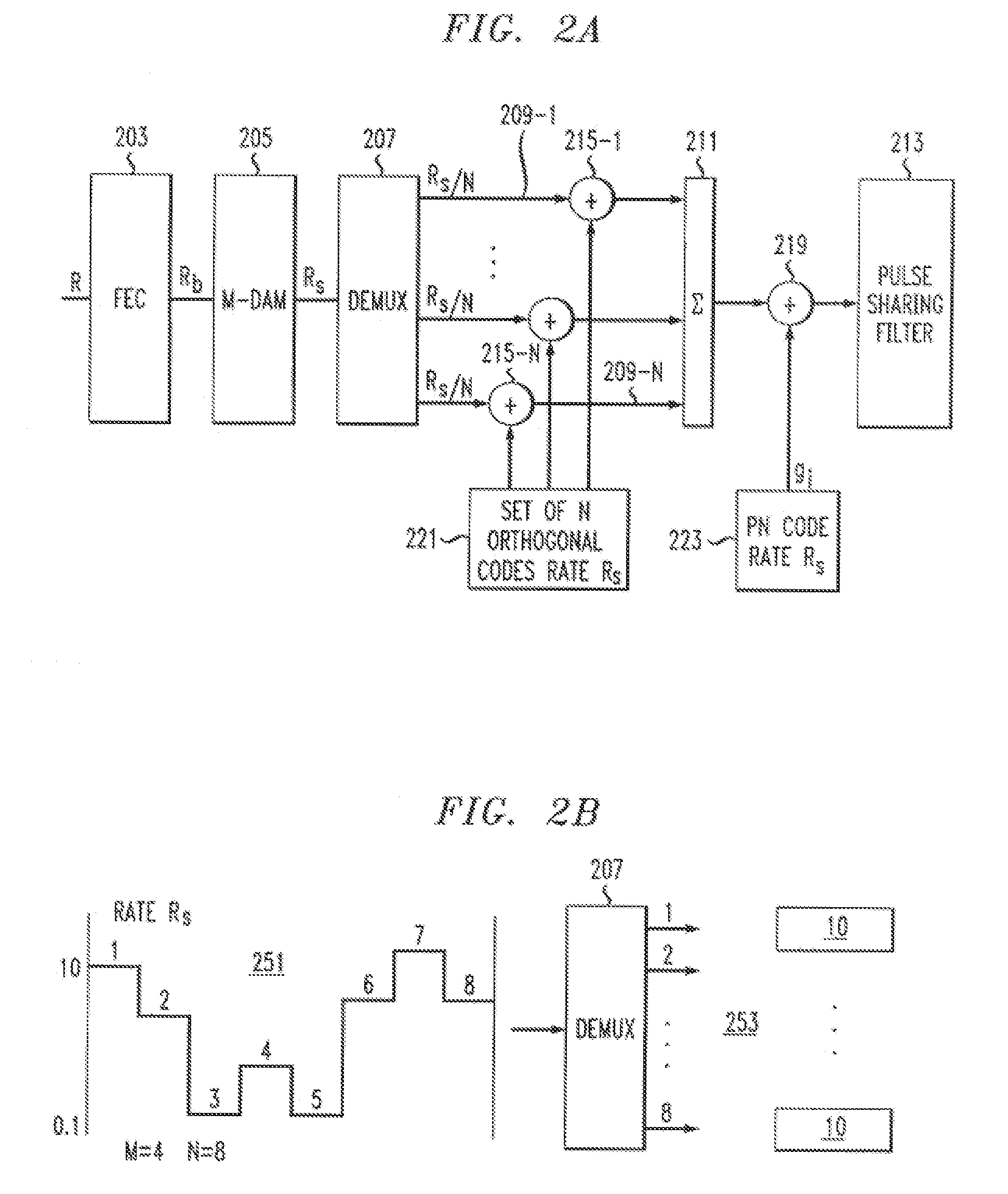Orthogonal Code Division Multiplexing for Twisted Pair Channels
a technology of orthogonal code and channel, applied in the field of high-speed data transmission, can solve the problems of affecting high-speed data transmission, interfering with one another, and all processes are susceptible to external interferen
- Summary
- Abstract
- Description
- Claims
- Application Information
AI Technical Summary
Benefits of technology
Problems solved by technology
Method used
Image
Examples
Embodiment Construction
[0026]In accord with the principles disclosed herein, data transmissions are distributed by frequency so that the highest data load is at lower frequencies, where the capacity is high, and the lowest data load is transmitted at high frequencies. Orthogonal Code Division Multiplexing (OCDM) is utilized to achieve this objective. Multiplexing of existing low bit rate services are multiplexed with high data rate T1 service. In a particular embodiment the OCDM is a carrierless baseband system with adaptive pulse amplitude modulation (PAM) loading.
[0027]The drawing and text uses various symbols in the various descriptions. These symbols are as follows:
[0028]W: the overall Twisted Pair Channel (TPC) useful bandwidth;
[0029]Rc: The basic chip rate;
[0030]M: The total number of baseband sub-rate OCDM components (groups of branches) set to match power spectral density of the channel;
[0031]Rc, 2Rc, 4Rc, . . . 2M−1Rc are chip rates used by M groups of OCDM with the relationship between basic chi...
PUM
 Login to View More
Login to View More Abstract
Description
Claims
Application Information
 Login to View More
Login to View More - R&D
- Intellectual Property
- Life Sciences
- Materials
- Tech Scout
- Unparalleled Data Quality
- Higher Quality Content
- 60% Fewer Hallucinations
Browse by: Latest US Patents, China's latest patents, Technical Efficacy Thesaurus, Application Domain, Technology Topic, Popular Technical Reports.
© 2025 PatSnap. All rights reserved.Legal|Privacy policy|Modern Slavery Act Transparency Statement|Sitemap|About US| Contact US: help@patsnap.com



